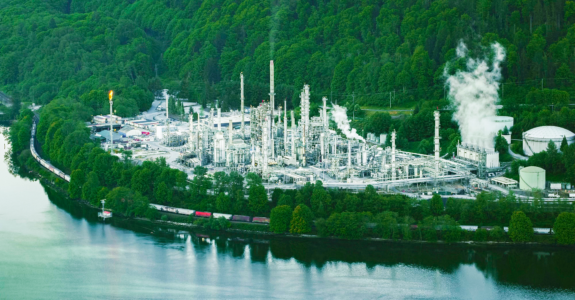
BCER Changes to Site Inspection Frequencies: A Reflection from Carter Morrison
January 31, 2025
By: Carter Morrison
In the ever-changing landscape of environmental regulation, organizations are continuously tasked with adapting to new standards designed to improve sustainability and reduce environmental impact. Recently, regulatory bodies in British Columbia have updated their requirements for the frequency of site inspections for oil and gas operators, specifically in response to higher-risk facilities and challenges with non-compliance.
When I reflect on these recent changes, it’s clear that these shifts represent much more than a regulatory requirement. They’re a call for rethinking how we manage risk, monitor emissions, and safeguard our planet. At Montrose Environmental, these changes have pushed us to innovate, collaborate, and lead by example in creating meaningful environmental impact.
The Driving Force Behind Frequency Adjustments
Regulatory bodies, like those in British Columbia, have adopted data-driven approaches to site inspections, such as Alt-FEMP programs and continuous controlled tank monitoring. Increased frequencies for facilities with higher risk profiles or historical non-compliance highlight the urgency of proactive environmental stewardship. For me, this is a shift toward precision and performance, ensuring resources are directed where they matter most. It emphasizes the understanding that environmental management isn’t static; rather, it evolves alongside our ability to analyze and act on real-time data.
The Role of Leak Detection Sensor Networks (LDSNs) in Inspection Adjustments
One of the key innovations enabling us to adapt at Montrose is our Leak Detection Sensor Networks (LDSNs). The LDSN is a fixed-point sensor designed to continuously monitor emissions, providing real-time data on potential leaks. Its functionality is enhanced by an integrated field response component, ensuring that any detected anomalies can be promptly investigated and addressed. This combination allows for a proactive approach to emissions management, improving accuracy, response time, and overall operational efficiency. These devices are game-changers for facilities navigating heightened inspection demands. From real-time data to automated alerts, they’ve reshaped how we think about compliance and operational efficiency. The benefits are undeniable:
- Enhanced Accuracy: Leaks are detected with unparalleled precision, reducing false positives.
- Process Safety: LDSNs ensure prompt leak detection and immediate response to enhance safety practices while meeting regulatory requirements.
- Efficiency Gains: Data collection is automated, lightening the load on field teams.
- Proactive Compliance: 24/7 monitoring allows for early detection of emissions. Issues are flagged early, keeping operations within regulatory thresholds.
These systems don’t just meet the demands of increased inspections—they redefine what’s possible in emissions management.
Strategic Benefits of Adjusted Inspection Frequencies
Mitigating Environmental Risks
Higher inspection frequencies are about more than ticking regulatory boxes. They’re an opportunity to minimize valuable product loss, prevent avoidable incidents, and showcase Canada’s oil and gas sector as a world leader in clean energy. Identifying leaks early avoids compliance issues, builds trust with stakeholders, and proactively addresses emissions before they become a larger problem.
Operational Resilience
Frequent inspections demand vigilance. But they also uncover inefficiencies and hidden risks. I’ve seen how this kind of scrutiny transforms operations, creating systems that are more manageable and better prepared to adapt to future challenges.
Data-Driven Insights
With every inspection comes a trove of data. Advanced analytics allow facilities to transform this data into actionable insights. This empowers more informed decision-making, drives effective emissions reductions, and optimizes capital expenditure planning.
Implementation Challenges and Solutions
Scaling Inspection Protocols
For many facilities, the logistics of increased inspections are daunting. That’s where LDSNs thrive. These devices scale efficiently, offering broad coverage while freeing human resources for critical high-priority tasks.
Training and Resource Allocation
Higher inspection frequencies also require skilled personnel. At Montrose, we’ve prioritized training to ensure teams are equipped to comply and excel. With tailored strategies, we help facilities balance automated and manual inspections seamlessly.
Balancing Cost and Compliance
It’s easy to see increased inspections as a cost, but they’re actually an investment. LDSNs help facilities streamline operations, prevent compliance issues, and boost efficiency while detecting and reducing emissions sooner, leading to long-term savings and regulatory assurance.
Success Stories: Leading the Way in Compliance
Oil and Gas Facilities
One of our partners in oil and gas used a hybrid inspection model, combining an LDSN with targeted manual inspections. Within one year, they achieved significant reduction in their emissions. That’s not just compliance; it’s leadership.
Chemical Manufacturers
A chemical plant navigating heightened inspection requirements turned to an LDSN for real-time data. This approach enabled them to address leaks within hours, avoiding fines and operational disruptions.
The Future of Inspection Frequencies
Inspection frequencies will continue to evolve, reflecting advances in technology and regulatory expectations. Integrating AI, real-time alerting, and predictive analytics will take monitoring to the next level, enabling facilities to anticipate issues before they arise. At Montrose, we’re excited to collaborate with our clients to navigate this future and ensure they stay ahead of the curve.
Embracing the Shift
Changes to site inspection frequencies challenge us to think bigger and act bolder. Facilities willing to adapt can reap substantial rewards including stronger compliance, greater efficiency, and a leading role in environmental sustainability. At Montrose Environmental, we’re proud to be part of this journey, working alongside our clients to turn challenges into opportunities. Whether you’re navigating new inspection frequencies or seeking cutting-edge emissions management solutions, our expertise, innovative technologies, and data-driven strategies are here to guide you. Let’s build a cleaner, more resilient future—together. Contact us today to learn how we can help your facility thrive in this changing regulatory environment.
 Carter Morrison
Carter Morrison
Business Development Manager
As a Business Development Manager at Montrose Environmental Group, Carter brings over a decade of experience in the oil and gas industry. He holds credentials as a Steamfitter/Pipefitter with deep expertise in Environmental Management. He leads efforts to provide innovative emission reduction and methane emission management solutions, helping clients worldwide exceed their environmental and sustainability goals. Passionate about building strong client relationships and driving business growth, he thrives on identifying strategic opportunities and connecting clients with expert teams. His mission is to elevate emissions management beyond regulatory compliance, driving positive environmental change globally.

